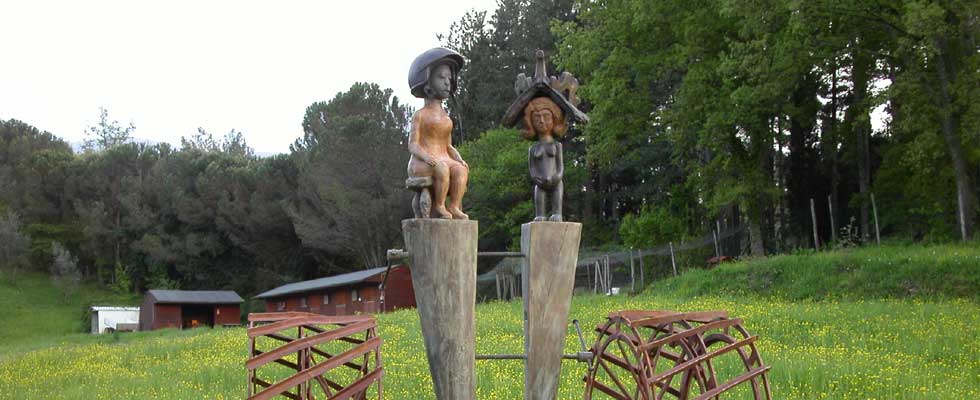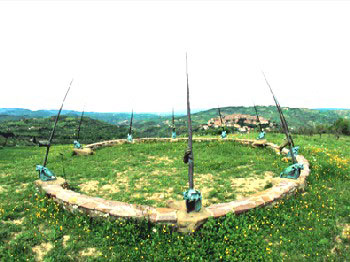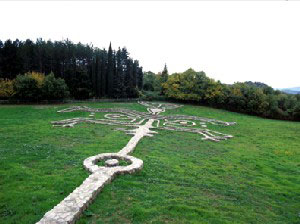
| Weather forecast | Web cam | Weather station | Contact us | Photo Gallery | Links | Search |
| Getting there | Nature | Culture | Epicurean living | Activities | Routes | Our hotel |
| Culture on Monte Amiata |
| Cultural holiday packages |
Daniel Spoerri Garden


(Some of the garden's sculptures)
Daniel Spoerri has worked as a poet and as an author, and in dance, mime and theatre. He is one of the artists who signed the Nouveau Realisme manifesto, and he has been a member of Fluxus. He is the inventor of Eat Art, and he produced the first art multiples with MAT editions. Spoerri is worldwide known for his tableaux pièges.
THE GARDEN
Il Giardino di Daniel Spoerri is a park located near Seggiano at the Monte Amiata, the highest mountain of Tuscany, in the centre of Italy between Florence and Rome, 60 km from Siena. Il Giardino hosts a collection of sculptures and installations of contemporary art with the contribution of several artists. Daniel Spoerri, who founded Il Giardino in the second half of the nineties, lives and works there. There are annual exhibitions of the artists represented in the park always from July to October. They take place in a museum which is part of the property.
ART IN AMIATA
We enter the garden of Daniel Spoerri, one of the most eclectic figures of the modern art world, who ever since the Sixties decided to settle his home and his genius in Tuscany, at the foothills of the Mount Amiata. The "Hic terminus haeret" Foundation has inaugurated the summer season opening the park which, since '91 has been constantly evolving, to introduce great new works of art scattered along the botanic trail designed by landscape architect Irma Beniamino.
In the summer season the restaurant "Non solo Eat Art s.” inside the almost sixteen hectare estate, which can be visited in about three hours. Modern art lovers can therefore admire sculptures by International artists and works perfectly integrated with the environment, like the inspiring "unicorn ring” which looks from the top of the hill onto the old town of Seggiano. The dialogue which is defined between the environment and the installations is one of the motives that regulate the philosophy of the Garden. Spoerri defines them "figures against pain and exercises to fight the fear of a grandiose nature, which shows its power at every step ".
From the conflict, the dialogue or the harmony between human genius and Nature's Work, the Garden's artistic pauses evolve. Some installations are interactive like the "Penetrable sonorous" or Gerstner "Plato's wood", in which one must turn about to find a privileged point of view which will reveal the work's enigma. Of the "host" Daniel Spoerri, we can see the "Clones' common grave" and "The pyramid of the woman on the knot ", on the cusp of which a knotty stick with at its summit a reproduction of Milo's Venus, all on a three legged stool.Among works recently installed we find that of Zoltan Kruse: it consists of three thrones in stone and metal, the”Grass sofas", Goethe's "Good luck stone" the "Labyrinth". Among curiosities "Bonzai piece", a sculpture in bronze depicting a big child with his hands raised to the sky and his mouth open (brought to Seggiano by a Japanese artists), whereas German Till Augustin displays two Georgian knots, iron cubes on pedestals on which there are knots cut by a cable car.Arman and Eva Aeppli finally, continue their collaboration with Spoerri's Garden: the former with a "Sedentary monument", she, the park's female protagonist for the more recent "Nine astrological aspects” has also completed the enigmatic bronze sculptures that periodically call a wide public.